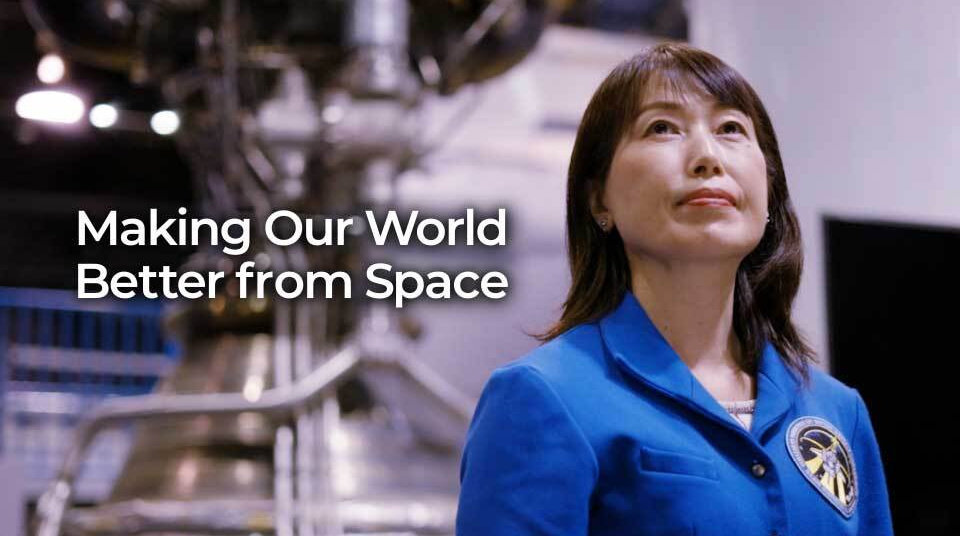Amid rapid global advancements in the development and utilization of outer space, Japan is carrying out new efforts in its aim to become a “self-sufficient space-faring nation.” A former Japan Aerospace Exploration Agency (JAXA) astronaut explains the country’s future space vision and the possibilities that are opened up through the use of outer space.
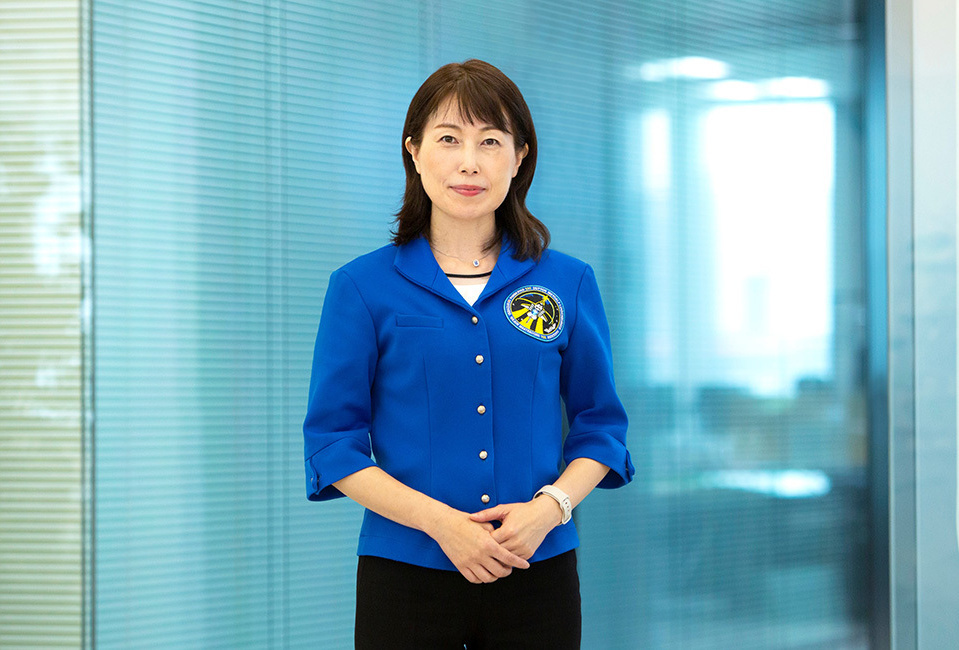
After studying aerospace engineering at the University of Tokyo Graduate School, YAMAZAKI Naoko was certified as Japan’s second female astronaut in 2001. Currently a member of subcommittees of the National Space Policy Committee of Japan, she also engages in a wide variety of activities, from giving lectures and writing about space to developing human resources.
Today, over half a century since the first human footsteps were planted on the Moon, space development and utilization are advancing at a feverish pace. In 2022 alone, a record number of satellites and other objects were launched into orbit—2,368 in total, about 11 times that of a decade ago—for various purposes, from national security and communications to disaster management and environmental conservation. While on the one hand, private firms have begun to offer manned spaceflights, Artemis, an international space exploration program promoted by the United States, aims to send humans back to the Moon as early as 2025, with the subsequent plan to develop infrastructure for sustainable activities on and around the Moon. “Momentum is building to not just go to space, but to also expand economic activities to cislunar space, the area between the Earth and the Moon’s orbit,” says YAMAZAKI Naoko, a former astronaut with the Japan Aerospace Exploration Agency (JAXA), who now serves as a member of subcommittees of the National Space Policy Committee of Japan.
Against that backdrop, Japan is advancing new initiatives to become a “self-sufficient space-faring nation.” With its sights set on participation in the Artemis program, JAXA selected two astronaut candidates in February 2023. Then, this June, Japan revised its Basic Plan on Space Policy with the aim of maintaining and strengthening the autonomy of its space activities. “As space becomes an indispensable foundation for national security, industry, and daily life, the ability to nurture and possess its own key technologies for accessing and utilizing space will be crucial for any global leader,” notes Yamazaki.
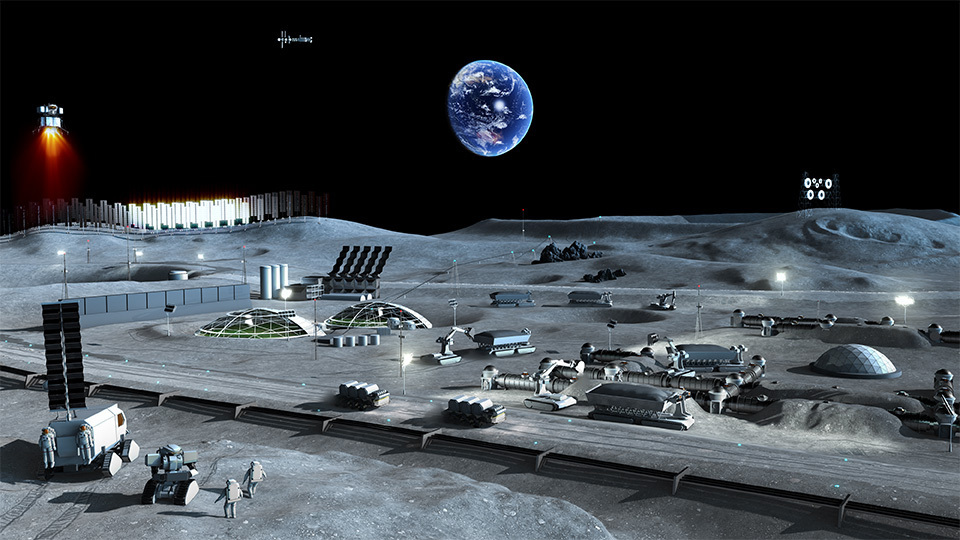
Artemis—an international space exploration program in which Japan is participating—aims to establish a long-term presence on the Moon’s surface and in its general vicinity, with the eventual goal of serving as a relay point for exploratory missions to Mars. JAXA
Recent advancements in space exploration have been driven mainly by the private sector. Some estimates see the global space industry tripling in scale from 350 billion dollars in 2020 to over 1 trillion dollars by 2040. The private sector already launches more satellites every year than does the public sector worldwide, and in Japan innovative businesses have been generated such as startups that aim to remove space debris—an increasingly serious issue of late. Yamazaki points out, “Just as various IT industries first came into existence when the Internet became accessible to everyone, space can be a place where diverse ideas emerge.”
Crucial to such a future is the reinforcement of infrastructure promoting private-sector activities. One example is the Quasi-Zenith Satellite System, the global navigation satellite system developed by the Japanese government. Working in combination with the Global Positioning System (GPS), it enhances the accuracy of location information to within centimeters of an object’s actual position. Current efforts to fortify the system are sure to significantly broaden its applications, including the operation of autonomous drones, and by the mid-2020s, it is expected to provide such highly accurate information even without the support of GPS.
Constructing and organizing satellite-launching sites and space transportation bases will also be important, given the expected increase in demand. Yamazaki herself has been working with local governments, private organizations, and related ministries to create a platform for collaboration among spaceport projects throughout Japan. Projects are already underway in four locations, as is coordination with national spaceport projects, with the ultimate goal of making Japan Asia’s spaceport hub. “Locating such crucial ports here will be vital to making Japan a global leader and will also generate new industries with high added value.”
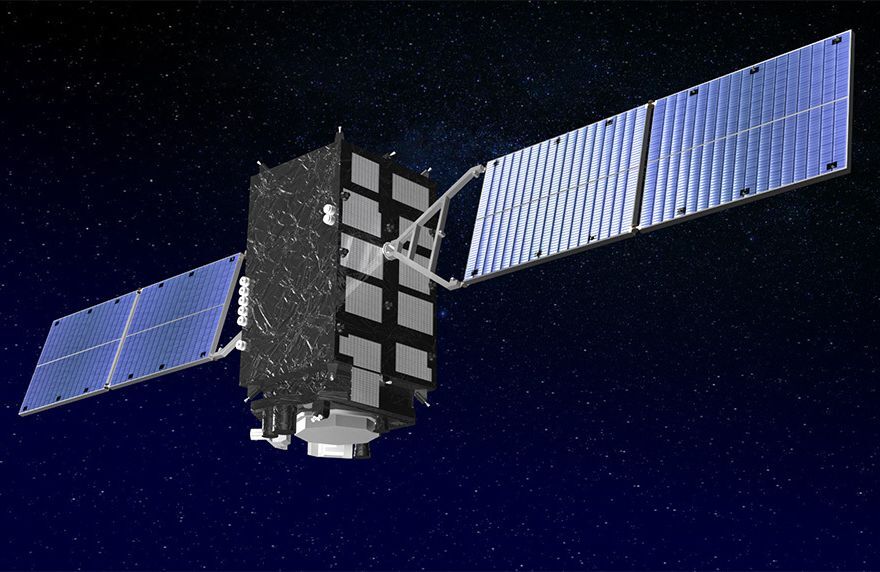
Over the next few years, Japan plans to increase the number of satellites in its Quasi-Zenith Satellite System, which provides highly accurate positioning information. That will enable the system to be used widely in the rest of Asia and in Oceania. QZSS.GO.JP
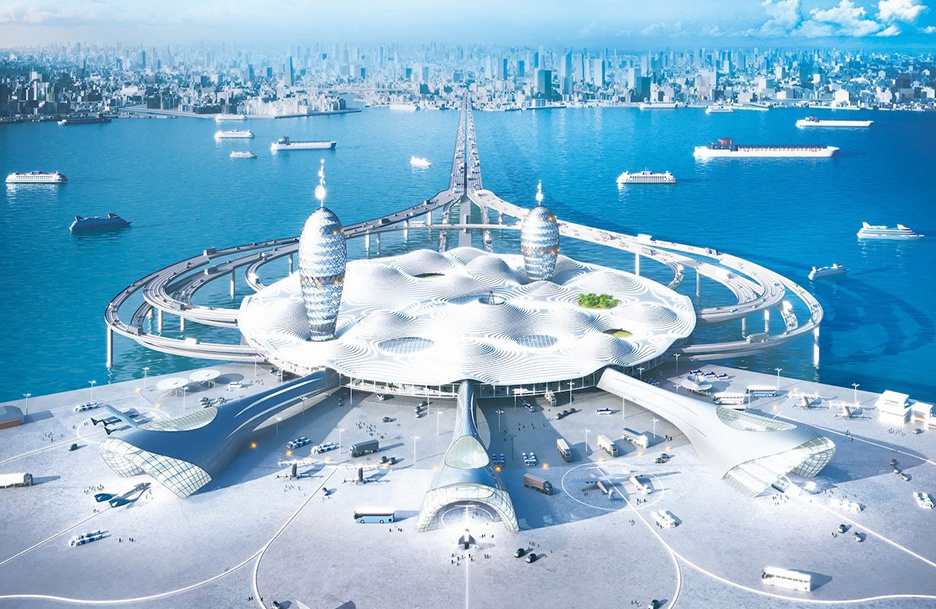
An artist’s rendering of a spaceport. Currently, there are regional plans to construct such spaceports in four locations across Japan, from Hokkaido to Okinawa. In the future, such rural areas might serve as space transportation hubs. ©2020 CANARIA, DENTSU, NOIZ, SPACE PORT JAPAN ASSOCIATION.
Yamazaki had dreamed about space and set her sights on becoming an astronaut ever since childhood, but after participating in a mission working on the International Space Station in 2010, she experienced a radical change in her perspective. “When I was up there, I came to the awareness that space was an endless expanse of darkness, and that instead, what was truly irreplaceable was the brilliant blue Earth shining in the midst of that darkness. And it made me feel that my new mission was to protect it. We can use space to change our planet for the better. To do that, though, it is important for us to cooperate with various countries and people under the principles of the Outer Space Treaty—the United Nations space treaty, which states that the exploration and use of outer space shall be the province of all mankind.”
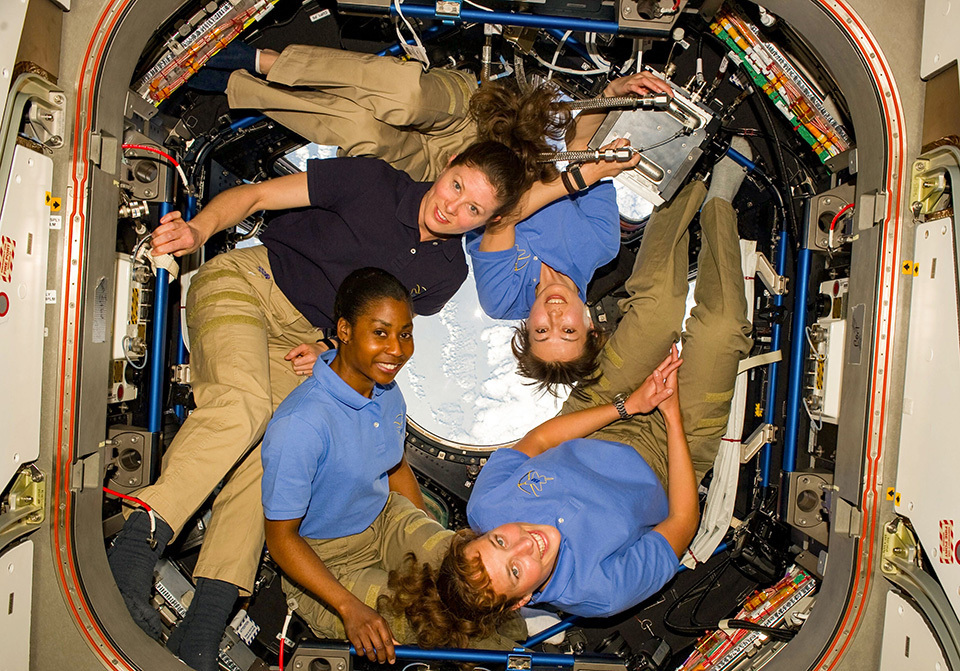
In 2010, Yamazaki (top right) boarded the Space Shuttle Discovery and spent 15 days in space, including time on the International Space Station. “When I returned to Earth, I was struck by how much I appreciated breezes and the fragrance of plants. That made me want to take good care of what is usually taken for granted. When people consider the issues facing the planet, I want them to look for solutions by broadening their horizons to space. That will expand both their ideas and possibilities.” NASA



























